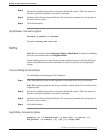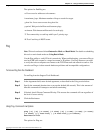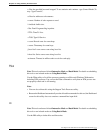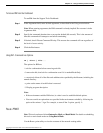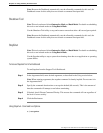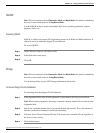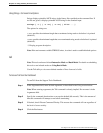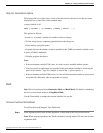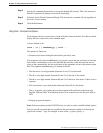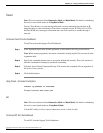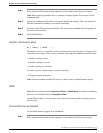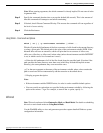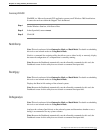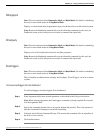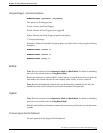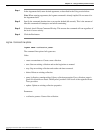
Step 2
Specify the command duration time or accept the default (60 seconds). This is the amount of
time the command will attempt to run before terminating.
Step 3
If desired, check Elevate Command Priority. This ensures the command will run regardless of
the level of server activity.
Step 4
Click the Run button.
Using Touch - Command Line Options
Touch displays the last <count> lines of each of the files listed on the line. If no files are listed,
display the last <count> lines of the standard input.
<count> defaults to 10.
touch [ -c? ] [ mmddhhmm[yy] ] file1 ...
The options for Touch are:
-c: Prevents touch from creating files that did not previously exist
If an argument in the form mmddhhmm[yy] is passed to touch, the last-write time of each file
listed on the command line is set to the specified date and time. If the date and time are not
given on the command line, the last-write times of the arguments are set to the current system
time. The argument mmddhhmm[yy] is formed as follows:
•
The first mm is a two digit number (between 01 and 12) for the month.
•
The dd is a two digit number (between 01 and 31) for the day of the month.
•
The hh is a two digit number (between 00 and 23) for the hour. Note that a 24 hour clock is
assumed.
•
The second mm is a two digit number (between 00 and 59) for the minute.
•
The yy, if present, is for setting the year. Years between 80 and 99 are understood to be
between 1980 and 1999. Years between 00 and 79 are assumed to be for the years 2000 to
2079.
-?: Display program description.
Note: If the environment variable TOUCH exists, its value is used to establish default options.
You can override an option that was specified in the environment variable by following the
option with a minus '-' sign. For example, to turn off the -v option, specify -v-.
Cisco Support Tools User Guide for Cisco Unified Software Release 2.1(1)
231
Chapter 14: Using 3rd Party Common Tools
touch



